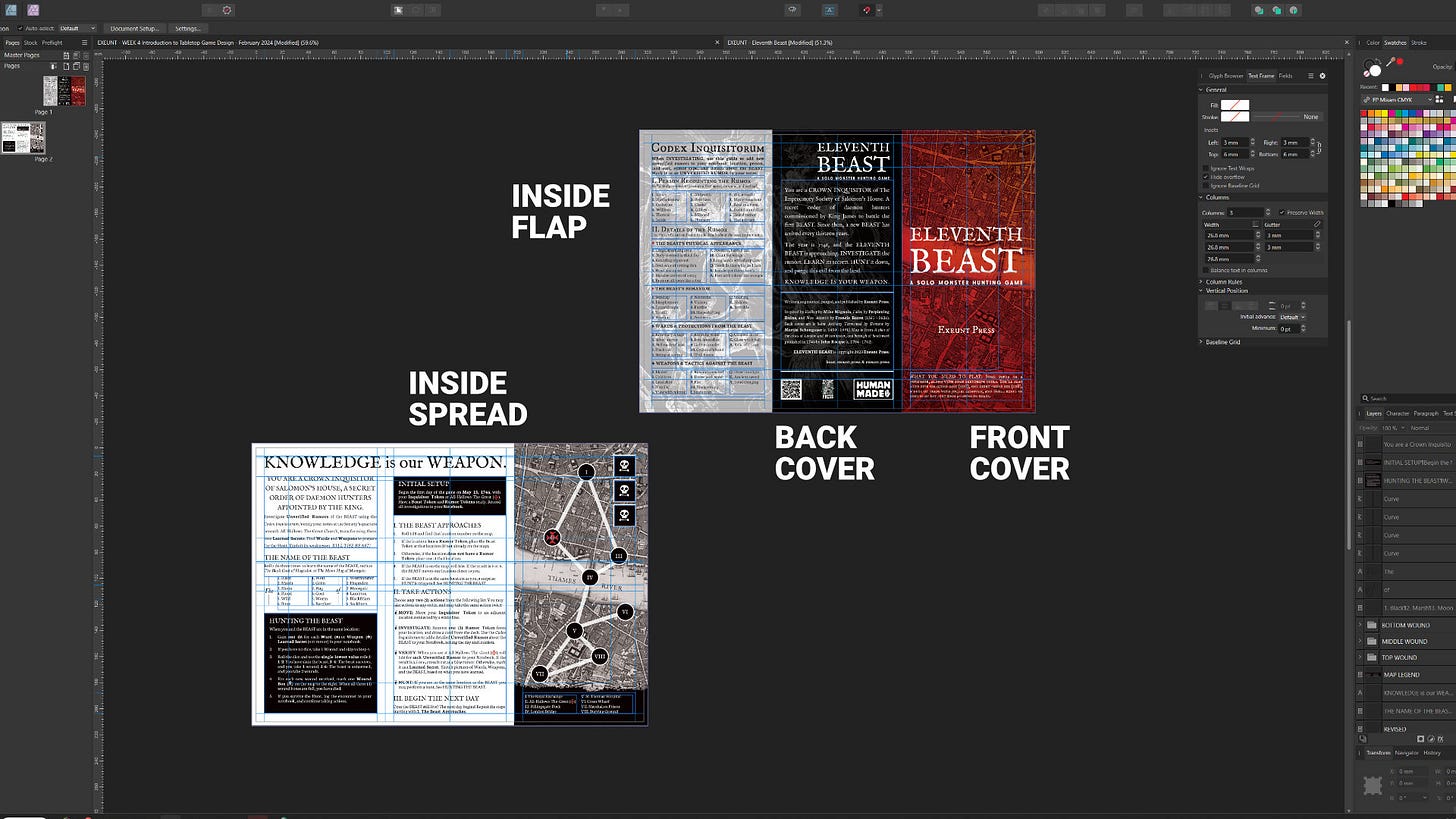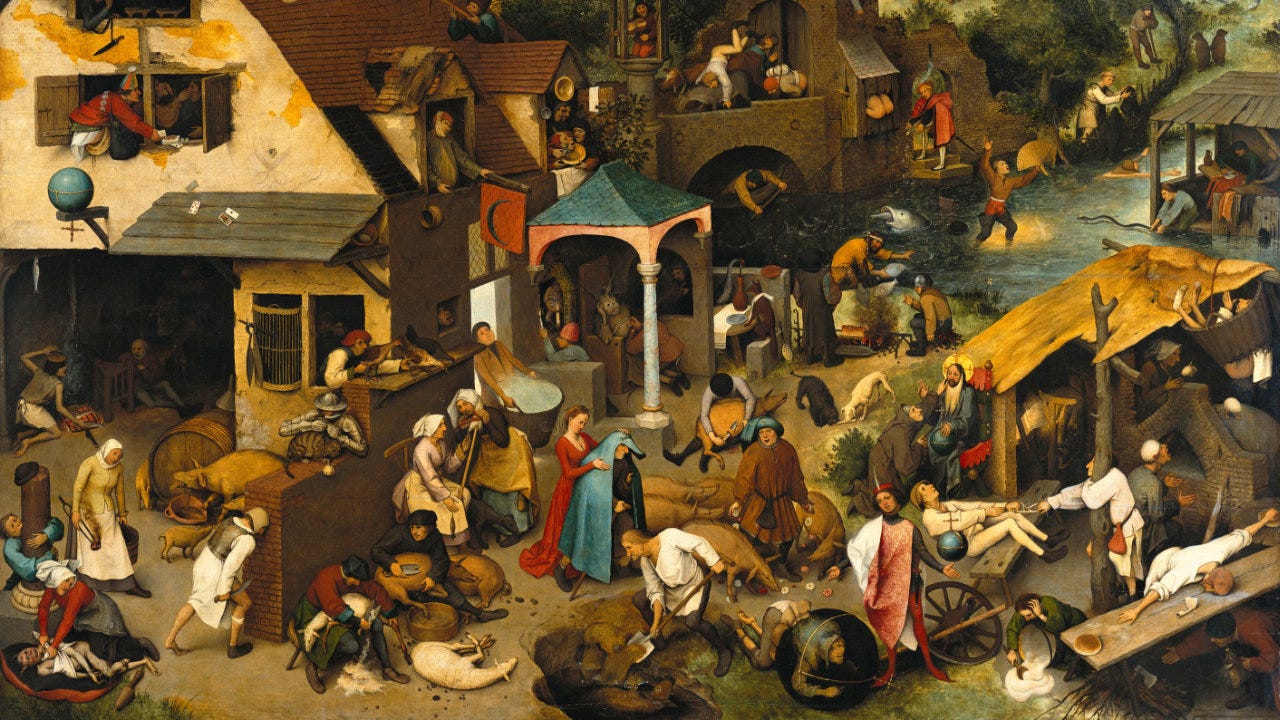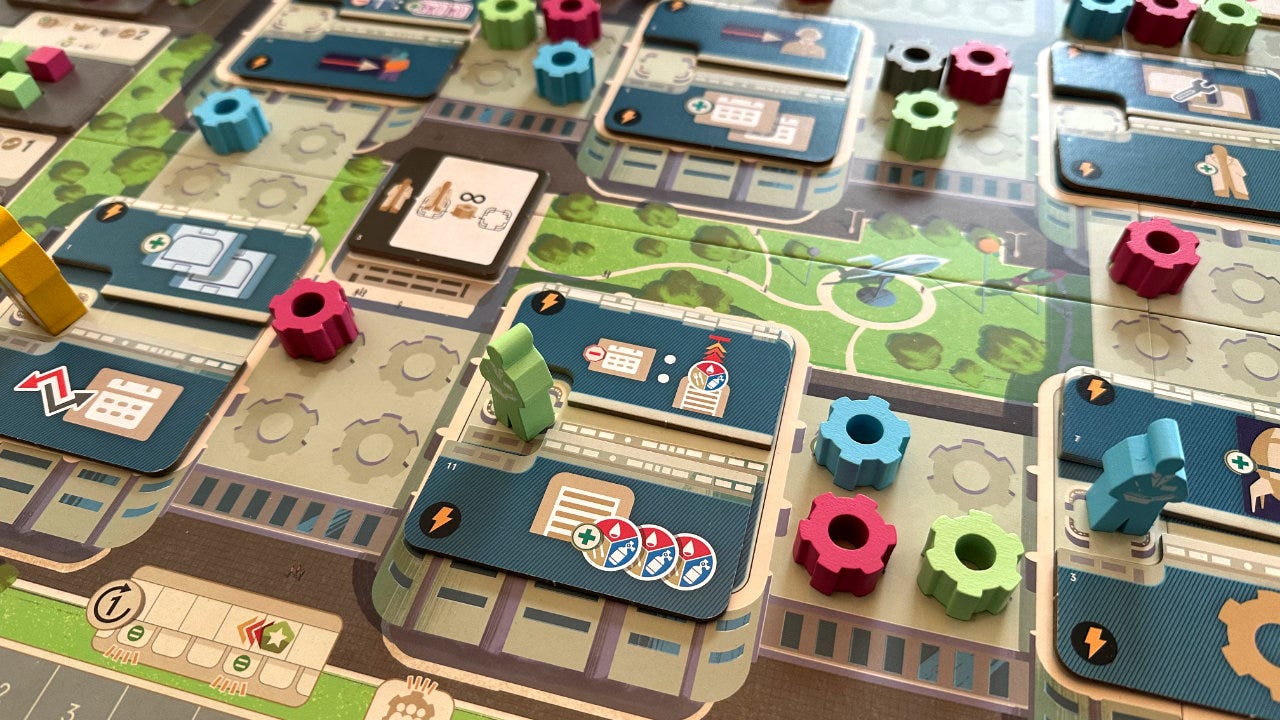👨🏫 Week 3: Teaching design, layout and publishing
Continuing the Make Your Own One-Page RPG class at a local public library, this week we focus on design, layout, and publishing. Also: Galactic Cruise.
TL;DR Summary
👨🏫 Week 3: Teaching design, layout and publishing
🧠 Do we need cognitive closure in games?
🎲 Recently played: Galactic Cruise
👨🏫 Week 3: Teaching design, layout and publishing
I’ve been teaching a Make Your Own One-Page TTRPG class at my local public library and doing a quick write-up for each session:
Week 2: How and why we play games
Week 3: Design, layout, and publishing
In Week 3 we learned how to do design and layout with the goal of publishing our games online.
Design software
My biggest piece of advice is to use the software you are most comfortable with. If you already know how to use Adobe, cool, use that. If you usually use Affinity, use that. Start small and simple. Google Docs works well for making a one page game.
We did discuss some things to watch out for. Using Photoshop or Procreate might lead to your text being rasterized, leading to potential printing issues. Canva might make it hard to work with spreads and make vectorized files.
I personally use Affinity Publisher for just about everything and have shared 10 tips I wish I knew when I first started out.
General layout advice
I could easily fill an entire class on layout and design. It’s a really complicated subject and doing it right takes a lot of expertise, most of which I’m just learning as I go. So instead of an exhaustive lesson, I offered a few general tips:
Paper size: Use something that will fit in the annual One-Page RPG Jam.1 That means sticking to either US Letter (8.5 x 11”) or ISO A4 (210 x 297 mm). My recommendation is to use A4 and A5 page sizes.
Common layouts: Two major options: (A) flat, unfolded A4 single sheet front and back, or (B) folded trifold or gatefold A4 brochure or pamphlet. Everyone in the class seemed to prefer and appreciate the structure provided by the trifold.2
Consider font size: No hard and fast rules for font size, but stay above 10 pt and you are probably OK. Size depends on the typeface. Check characters per line, shooting for about 45 - 85 with a recommended maximum of 80. Reduce the number of words, not the font size!
Make it readable: People won’t play your game if they can’t read it. Use a normal font for body text and keep the display fonts in headings. Use high-contrast colors.
Make it print friendly: People will want to print your game. Try to use black text on white for the main body of the game. Consider a “print friendly” alternative version.
Give yourself some space: Big margins can make your work look more professional. Use whitespace and negative space. Don’t try to pack every inch of the page with words.
Art & graphics
Art is the best, fastest way to grab the attention of potential players. Custom art can be expensive, especially if this isn’t a commercial project. Using public domain art can be a good alternative, especially when making your first game or you want weird rabbits and demons.
We also covered other low/no cost art sources such as Unsplash, Pixabay, and artist Patreon pages. A good example is commercial-use art available from Perplexing Ruins.
Publishing online
While DTRPG and itch.io are both online publishing alternatives, all of my experience has been with itch.io. So that’s what we focused on in the class. We made accounts and I set up a private game jam for the class.
Print publishing
Print publishing is another complicated subject, but I wanted to provide a few tips. Sometimes even exposure to the vocabulary can be a good start, giving people the terms they need to start their own searching and learning.
RGB vs. CMYK colors (see also: EP CMYK Color Palette)
Crop marks, bleed, trim, margins, gutters
Layout and panels for trifold brochure spreads
Where to get your games printed (online and locally)
The next class
In the final week of the class (Week 4) we will share our games. We’ll also learn how to pitch and playtest games.
If you aren’t able to attend the class, you can still get almost all the information and exercises! Make Your Own One-Page RPG is available in both print and digital formats.
MAKE: You can get both ADVENTURE! Make Your Own TTRPG Adventure and Make Your own One-Page RPG at the Exeunt Press Shop!
🧠 Do we need cognitive closure in games?
After losing another game of Burning Banners, I started to think about how we should handle garbage time — the time left in the game after you already know who is going to win.
More than just being unlikely to win, there are times when it is actually impossible for a player to make a comeback to victory. Should we just concede or resign? End the game early? Discuss it? Play it out to the end?
I explore the options and a possible solution through the lens of cognitive psychology and grief at Skeleton Code Machine.
READ: Garbage time in tabletop games at Skeleton Code Machine
🎲 Recently played: Galactic Cruise
I played Galactic Cruise recently. It’s a heavier euro-style game (BGG weight 3.87/5) about building and launching rockets to send guests on fancy space vacations. There’s a lot going on in this one, and I was honestly a bit intimidated after I watched some “how to play” videos. Once we got going, however, turns were quick and it flowed easily. At it’s core, I’d call it a worker placement game with many ways to gain victory points.
Overall I had fun with it even though I came in second place. I think it would benefit from repeated plays beyond the first.
PLAY: Galactic Cruise with art by Ian O’Toole
Thanks for subscribing to Exeunt Omnes!
Check out games.exeunt.press for all the latest games and resources!
- E.P. 💀
I do not run the One-Page RPG Jam and am not affiliated with it in any way. I just think it’s a really fun idea and enjoy participating.
Trifold is best fold.





